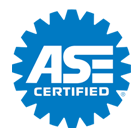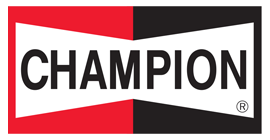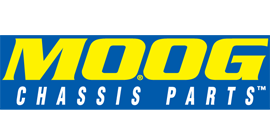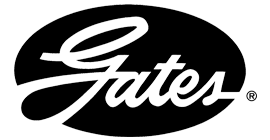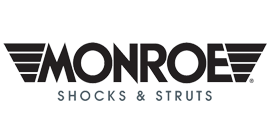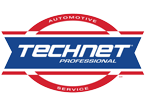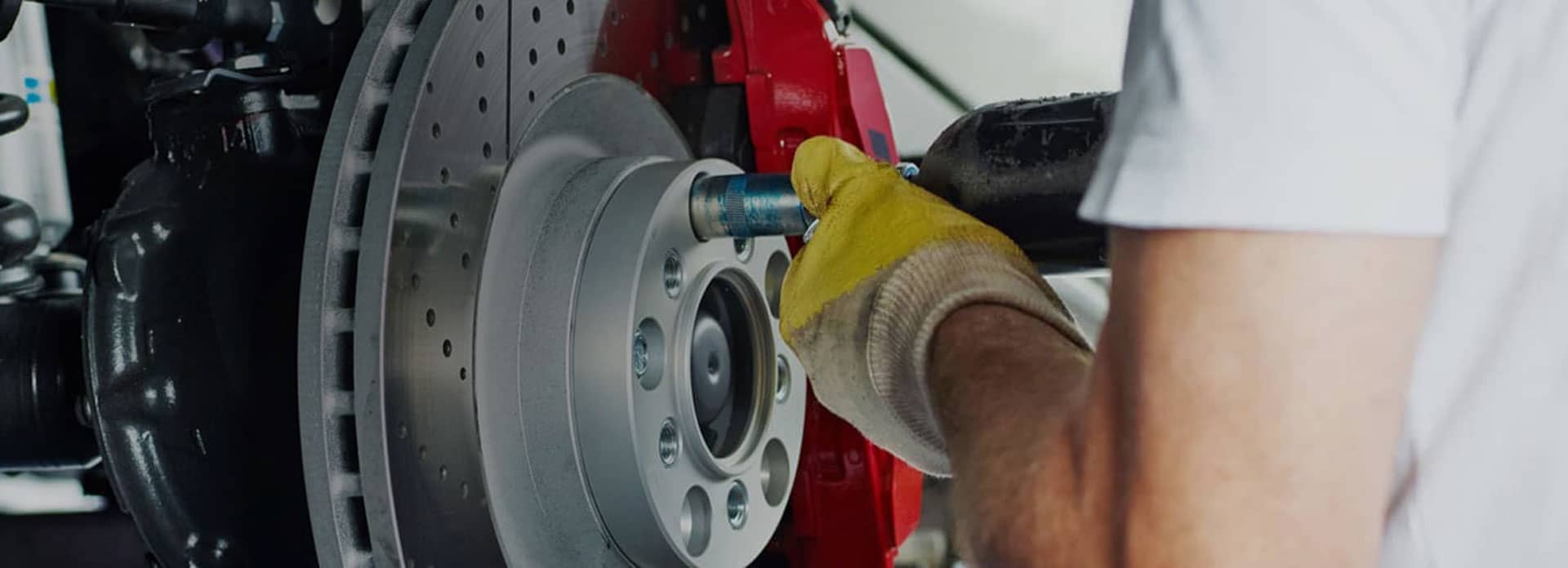
AUTONET TV
Archive for September 2022Put the Brakes On! (Brake Caliper Replacement)Posted September 25, 2022 8:24 AMKeeping your vehicle's brakes in top shape is one of the most important things you can do for your safety and those on the road with you. Most drivers know a little about brake pads and rotors but maybe not so much about another brake component called the calipers. Disc brakes work by a mechanical system that presses your brake pads against discs called rotors (you can usually see these discs through your wheels). The friction stops your vehicle smoothly when everything is working the way it should. The calipers use the hydraulic pressure of the brake fluid to apply the stopping power. After they've been on your vehicle for a while, the calipers can get stuck or wear out. If calipers on one side of the vehicle work correctly and not on the other, you might feel a pull in one direction. You might feel the same kind of pull if the caliper is stuck and is applying constant pressure. You might hear scraping or squealing coming from a stuck caliper and you might smell burning on that side. The friction from a caliper that's always applying pressure may cause that wheel to heat up, so after you've pulled your vehicle off the road safely, the wheel with the stuck caliper will might feel hotter than the others Because there are many different components to the brakes, it's best to leave the diagnosis and repair to a trained technician. They will run each wheel through a series of tests and inspections that can pinpoint the problem. Sometimes it involves more components than just the caliper that may need changing at the same time. The best way to make sure your brakes will perform well is to is to have our service center perform regular inspections and follow the vehicle manufacturer's recommended service. That way your brakes will be ready, willing and able when you call on them to put a stop to things. TJ's Auto Center Inc. Alleviate the Creaks and Squeaks (Chassis Lubrication)Posted September 18, 2022 11:38 AMIf your vehicle creaks and squeaks when you drive down the road, it may mean that some of the metal parts are rubbing against each other and need to be lubricated. Those could be parts of the suspension, steering system and the drivetrain. Years ago, most vehicles had to have their chassis (what you think of as the frame) regularly lubricated. Newer vehicles are made with what some call "lifetime lubrication," but there are still parts of the chassis that need to be maintained with lubricants. Your service advisor can help you know when that needs to be done. In your owner's manual, the vehicle's manufacturer lists components that need regular maintenance. Things like u-joints, steering joints, sway bars, bushings and joints in the suspension. Some of them may have that "lifetime lubrication," while others may not. When you bring your vehicle in for service, a technician will look for any parts that have grease fittings. They will inspect these components, clean the fittings so dirt and other contaminants won't be forced into the part and then lubricate them with a lubricant that meets the manufacturer's specifications. Sometimes a chassis lubrication is done at the same time as an oil change. That's also an ideal time for the technician to check other parts of your vehicle that may need attention. That could include greasing other parts such as the fuel door, trunk and door hinges, suspension springs and door latches. Times have changed since the days when a "lube" job was synonymous with an oil change. Depend on your owner's manual and advice from your service advisor to know when "grease" is the word—and appropriate for your vehicle. TJ's Auto Center Inc. Staying In Charge (Alternator Repair)Posted September 11, 2022 7:26 AMSeems like these days, we're hearing about more and more electric or hybrid vehicles. Keep in mind that conventional gasoline internal combustion vehicles have important electrical components, too, and it's important to make sure they're operating at their peak. In a vehicle with a gasoline engine, the part that keeps the battery charged is the alternator. It converts the mechanical energy created by the engine into electrical power. To do that, a shaft in the alternator has a pulley on one end that's driven by a belt that is turned by the engine. A series of magnets then spins around coiled wires and it creates alternating current, or electricity. Your vehicle uses that to charge the battery that, in turn, keeps other electrical components in your vehicle working. Here are a few signs that the alternator isn't doing its job right. The battery keeps going dead, your instrument panel's battery light is on (it looks like a rectangle with a - and + inside and a couple of "terminals" on top), or your lights are dimmer than they usually are. You may also have a voltage gauge that shows lower than usual power. If bearings in your alternator are seizing up, you may hear a grinding noise coming from your engine compartment. If you have any of those signs, bring your vehicle to us so we can check your electrical system. A technician will run diagnostics on your alternator, the cables and the battery. Because the alternator is driven by a belt, the technician will check what shape all the drive belts are in. Plus, we'll see how much electricity the alternator is putting out. If your alternator has failed, it can be replaced with a new or a remanufactured one. Speak with your service advisor about which will best suit your needs. Oh, and keep in mind that sometimes other parts may have to be replaced at the same time. For example, if your alternator's bearings froze up, that may have damaged the drive belt, and it may have to be replaced at the same time. TJ's Auto Center Inc. Rotation Explanation (Tire Rotation Patterns)Posted September 6, 2022 4:16 AMYou may notice that when you get your vehicle's oil changed, your service adviser may recommend that you have your tires rotated at the same time. The reasons are simple. That will allow your tires to wear more evenly and reduce the noise your tires make as you drive down the road. There are different ways of rotating tires. If your vehicle has non-directional tires and the same size wheels at each corner, here are the different rotation patterns. For all-wheel drive and rear-wheel drive vehicles, one is called the rearward cross pattern. The rear tires are moved to the front and stay on the same side of the vehicle, and the front tires are moved to the rear on the side opposite of where they were on the front. For all-wheel and four-wheel drive vehicles, use the X pattern. The rear tires are moved to the front on the opposite side of the vehicle, and the fronts are moved to the rear on the opposite side of where they were on the front. For front-wheel drive, there's the forward cross. The front tires are moved to the rear wheels on the same side of the vehicle as they were on the front and the rear tires are moved to the opposite side of the vehicle than they were on the rear. If you have directional tires (they only can be mounted in one direction) and the same size directional wheels, the rear tires are moved to the front on the same side of the vehicle where they were, and the front tires are moved to the rear on the same side they were on the front. And if you have tires with different sizes of non-directional tires and wheels on the front and rear, rotation will be from one side of the vehicle to the other. If you have a spare, it's put into the rotation using a forward cross or rearward cross. Yep, that's a lot to keep straight. So, we suggest letting your service advisor recommend the right rotation pattern for you at the interval your vehicle's manufacturer specifies. TJ's Auto Center Inc. | ||
SearchArchiveJune 2010 (71)July 2010 (4) August 2010 (4) September 2010 (4) October 2010 (4) November 2010 (4) December 2010 (4) January 2011 (4) February 2011 (4) March 2011 (4) April 2011 (5) May 2011 (5) June 2011 (4) July 2011 (4) August 2011 (5) September 2011 (4) October 2011 (4) November 2011 (5) December 2011 (4) January 2012 (5) February 2012 (2) March 2012 (5) April 2012 (4) May 2012 (5) June 2012 (4) July 2012 (5) August 2012 (4) September 2012 (4) November 2012 (1) December 2012 (2) March 2013 (1) April 2013 (3) May 2013 (2) October 2013 (5) November 2013 (2) January 2014 (2) February 2014 (3) March 2014 (1) July 2014 (4) August 2014 (7) September 2014 (4) October 2014 (5) November 2014 (4) December 2014 (5) January 2015 (4) February 2015 (4) March 2015 (4) April 2015 (4) May 2015 (3) June 2015 (5) July 2015 (2) September 2015 (2) October 2015 (4) November 2015 (5) December 2015 (2) February 2016 (2) March 2016 (4) April 2016 (4) May 2016 (5) June 2016 (4) July 2016 (5) August 2016 (4) September 2016 (4) October 2016 (5) November 2016 (4) December 2016 (4) January 2017 (5) February 2017 (4) March 2017 (4) April 2017 (3) May 2017 (5) June 2017 (4) July 2017 (5) August 2017 (4) September 2017 (3) October 2017 (5) November 2017 (4) December 2017 (3) January 2018 (5) February 2018 (4) March 2018 (4) April 2018 (4) May 2018 (4) June 2018 (4) July 2018 (5) August 2018 (4) September 2018 (5) October 2018 (3) March 2019 (4) May 2019 (2) June 2019 (5) July 2019 (2) August 2019 (2) September 2019 (4) October 2019 (5) November 2019 (4) December 2019 (5) January 2020 (5) February 2020 (4) March 2020 (5) April 2020 (1) May 2020 (2) June 2020 (1) July 2020 (1) August 2020 (5) September 2020 (4) October 2020 (4) November 2020 (5) December 2020 (4) January 2021 (6) February 2021 (4) March 2021 (4) April 2021 (4) May 2021 (5) June 2021 (4) July 2021 (4) August 2021 (5) September 2021 (4) October 2021 (5) November 2021 (4) December 2021 (4) January 2022 (6) February 2022 (4) March 2022 (4) April 2022 (4) May 2022 (5) June 2022 (4) July 2022 (5) September 2022 (4) October 2022 (5) November 2022 (4) December 2022 (4) January 2023 (5) February 2023 (4) March 2023 (4) April 2023 (5) May 2023 (4) June 2023 (4) July 2023 (5) August 2023 (4) September 2023 (3) October 2023 (2) January 2024 (1) February 2024 (4) | CategoriesAir Conditioning (17)Alignment (18)Alternator (6)Auto Safety (6)Automotive News (10)Battery (20)Brake Service (4)Brakes (22)Cabin Air Filter (9)Check Engine Light (7)Cooling System (21)Customer Detective Work (1)Dashboard (3)Diagnostics (5)Diesel Maintenance (1)Differential Service (4)Drive Train (10)Emergency Items (1)Engine Air Filter (3)Exhaust (13)Fluids (17)Fuel Economy (10)Fuel Pump (1)Fuel Saving Tip: Slow Down (2)Fuel System (49)Headlamps (7)Inspection (11)Keys to a long lasting vehicle (4)Maintenance (62)Monitoring System (3)Oil Change (7)Older Vehicles (5)Parts (8)PCV Valve (2)Safe Driving (1)Safety (6)Serpentine Belt (7)Service Intervals (10)Service Standards (14)Shocks & Struts (9)Shocks and Struts (2)Spark Plugs (2)Steering (15)Suspension (3)Timing Belt (6)Tire Pressure Monitoring System (1)Tire Rotation and Balancing (4)Tires (10)Tires and Wheels (44)TPMS (3)Transfer Case Service (1)Transmission (11)Trip Inspection (4)Warranty (2)Water Pump (1)What Customers Should Know (81)Wheel Bearings (2)Windshield Wipers (9)Winter Prep (8)Winter Tires (1) | |

OUR REVIEWS


Howard L.The business always does a great job and takes care of him. They are very polite.



